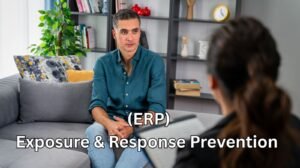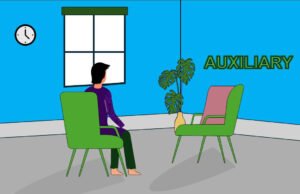
Exposure and Response Prevention (ERP) Therapy: A Key Approach for OCD and Beyond
Exposure and Response Prevention (ERP) is one of the most effective, evidence-based treatments for Obsessive-Compulsive Disorder (OCD). While some consider ERP as a separate therapy, it is actually a highly specialized technique within Cognitive Behavioral Therapy (CBT). ERP directly addresses one of the central struggles of OCD: the inability to trust that anxiety will decrease without performing compulsions. Through ERP, individuals learn that they can face their obsessive fears without relying on compulsive rituals, ultimately breaking the OCD cycle.
Understanding OCD: Obsessions and Compulsions
OCD is characterized by two main components:
Obsessions: Intrusive, unwanted thoughts, images, or urges that cause distress.
Example: A fear of contamination from touching a doorknob.Compulsions: Repetitive behaviors or mental acts performed to reduce the anxiety caused by obsessions.
Example: Excessive handwashing to relieve contamination fears.
The problem is that compulsions provide only temporary relief, reinforcing the obsession and keeping the cycle alive. ERP aims to break this loop.
How ERP Works in CBT
CBT therapists (often called CBT-ians) use ERP to help clients confront their fears safely. While CBT involves many techniques like cognitive restructuring and thought monitoring, ERP is one of its most powerful tools for OCD.
Exposure: The client is gradually exposed to feared situations, thoughts, or triggers. For example, touching a “contaminated” object.
Response Prevention: The client resists performing the compulsion (e.g., avoiding immediate handwashing).
Learning Process: Over time, the anxiety naturally decreases, and the client realizes that the feared outcome does not occur.
This directly challenges negative automatic thoughts and distorted beliefs related to obsessions. Clients begin to trust that they can tolerate discomfort without compulsive rituals.
The Role of a Safe, Non-Judgmental Environment
ERP must always be conducted in a supportive, non-judgmental environment. Since facing obsessions is challenging, therapists provide guidance and reassurance:
Real-Life Settings: Sometimes ERP takes place in the client’s own home or natural environment to make exposures realistic.
Involvement of Support Persons: In certain cases, a trusted family member may be included to assist with exposure exercises.
Gradual Preparation: Clients are never forced. Therapists carefully prepare them step by step before ERP begins.
Eventually, many individuals are able to use ERP techniques independently. However, trying ERP alone without guidance is not recommended, as structured support is crucial for success.
ERP is Not for Everyone
Although ERP is highly effective, it is not universally applied to every client. Therapists carefully assess:
Age of the client
Type and severity of OCD
Presence of other conditions
For some clients, cognitive restructuring and other CBT techniques may be sufficient to reduce symptoms. ERP is chosen only when it is safe and appropriate for the individual.
Other Conditions Where ERP and Exposure Techniques Are Used
While ERP is primarily associated with OCD, exposure techniques are also powerful in treating other disorders, such as:
Phobias (specific and social phobia)
Post-Traumatic Stress Disorder (PTSD)
Panic Disorder
- Health Anxiety
- Social Anxiety
Generalized Anxiety Disorder (GAD)
Both imaginal exposure (confronting feared thoughts or memories in imagination) and in vivo exposure (directly facing real-life situations) have been shown to be highly effective.
Preparing Clients for ERP
Before starting ERP, CBT therapists help clients build awareness of how OCD operates:
Thoughts and Cognitions – recognizing intrusive thoughts and distorted beliefs.
Emotions – identifying the anxiety and distress linked to obsessions.
Body Responses – understanding the physical sensations triggered by fear.
Behaviors – noticing compulsive rituals and avoidance patterns.
Only after clients gain a clear understanding of the OCD cycle do therapists introduce ERP, ensuring that the process feels structured, safe, and manageable.
Final Thoughts
Exposure and Response Prevention (ERP) is considered the gold standard for OCD treatment. By helping clients face their fears without relying on compulsions, ERP breaks the cycle of obsession and compulsion, offering long-term relief. Although ERP requires courage and patience, with professional guidance, many individuals achieve significant recovery and greater control over their lives.
Beyond OCD, ERP and exposure-based techniques are also highly effective for phobias, PTSD, panic disorder, and anxiety conditions—making them one of the most versatile tools in modern psychotherapy.

